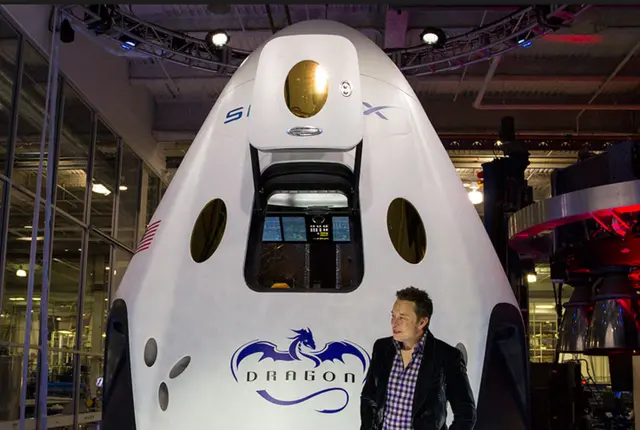SpaceX's Dragon cargo ship arrived at the International Space Station (ISS) on Sunday, carrying an experimental inflatable space habitat that might be crucial for future deep space explorations.
The spacecraft was successfully captured at 7:23 a.m. EDT (1123 GMT) by European astronaut Tim Peake, using the orbiting lab's robotic arm, with help from U.S. astronaut Jeff Williams, the U.S. space agency NASA said.
Another U.S. commercial cargo ship called Cygnus has been attached to the station since March 26. Two Russian Soyuz crew capsules and two Progress cargo ships are also docked at the moment. As a result, "Dragon' s arrival marks the first time two commercial cargo vehicles have been docked simultaneously at the space station," NASA said.
"With the arrival of Dragon, the space station ties the record for most vehicles on station at one time -- six." said NASA.
The last time six vehicles were docked to the station was back in the space shuttle era, when Discovery visited in February 2011.
Among the almost 7,000 pounds (3,200 kilograms) of items onboard Dragon is the 3,100-pound (1,400-kilogram) Bigelow Expandable Activity Module (BEAM), a 17.8-million-U.S.-dollar project that will test the use of an inflatable space habitat in micro-gravity.
BEAM is expected to be filled with air to expand four and a half times its original volume at the end of May after being attached to the ISS.
During its two-year test mission, astronauts will enter the module for a few hours several times a year to retrieve sensor data and assess conditions.
BEAM measures 5.7 feet (1.7 meters) long and 7.75 feet (2.4 meters) when packed, and 12 feet (3.7 meters) long and 10.5 feet (3.2 meters) in diameter when expanded, with 565 cubic feet (16 cubic meters) of interior volume
Inflatable habitats are designed to take up less room on a rocket, but provide greater volume for living and working in space once expanded, NASA said, noting that this test allows investigators to gauge how well the expandable habitat protects itself against solar radiation, space debris and contamination.
Science experiments onboard Dragon included those that will help investigators study muscle atrophy and bone loss in space, seek insight into the interactions of particle flows at the nano scale level and use protein crystal growth in micro-gravity to help design new drugs.
The spacecraft was launched Friday from Cape Canaveral, Florida, atop the California-based company's own Falcon 9 rocket, which made history by landing the first stage of its Falcon 9 rocket on a droneship in the Atlantic Ocean for the first time.
This was SpaceX's eighth cargo mission to the ISS. It also marked the first flight of Dragon to the ISS since last June, when the Falcon 9 rocket exploded about two minutes after liftoff.
Dragon will remain connected to the ISS until May 11, when it will depart for a parachute-assisted splashdown off the coast of California, bringing almost 3,500 pounds (1,600 kilograms) of science, hardware and spacewalking tools back to Earth for further study. Enditem
 简体中文
简体中文

